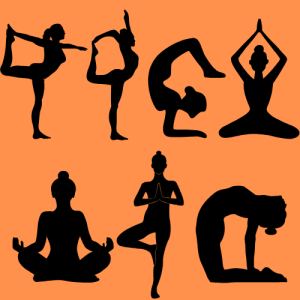Introduction
Yoga is a transformative practice that enhances physical, mental, and spiritual well-being. However, to fully reap its benefits, it’s essential to perform yoga asanas correctly. Incorrect posture can lead to strain or injury, whereas proper alignment helps in achieving flexibility, balance, and strength. This ultimate guide will walk you through the fundamental principles, common mistakes, and best practices to master yoga asanas correctly.

Why Proper Form Matters in Yoga
Performing yoga asanas correctly ensures that you:
- Prevent injuries and avoid unnecessary strain.
- Maximize the benefits of each pose.
- Improve flexibility, strength, and posture.
- Enhance breathing and overall body awareness.
Essential Tips for Performing Yoga Asanas Correctly
1. Focus on Proper Alignment
Alignment is key to practicing yoga safely and effectively. Each pose has a specific form that ensures you engage the right muscles without putting stress on joints.
Alignment Tips:
- Keep your spine neutral and elongated.
- Ensure your shoulders are relaxed, not hunched.
- Engage your core muscles for stability.
- Keep your knees in line with your ankles in standing poses.
2. Maintain Steady Breathing
Breathing, or Pranayama, plays a vital role in yoga. Proper breathing helps deepen your practice and enhances relaxation.
Breathing Techniques:
- Inhale through the nose, filling your lungs completely.
- Exhale slowly and fully to release tension.
- Sync breath with movement (e.g., inhale when extending, exhale when folding).
3. Avoid Common Mistakes
Many practitioners unknowingly make errors that affect their progress. Here are common mistakes and how to fix them:
- Overarching the Lower Back – Engage the core to support your spine.
- Locking the Knees – Keep a slight bend to prevent hyperextension.
- Rushing Through Poses – Hold each asana for at least 30 seconds.
- Ignoring Props – Use yoga blocks and straps for support and alignment.
4. Step-by-Step Guide to Performing Yoga Asanas Correctly
A. Mountain Pose (Tadasana)
- Stand tall with feet hip-width apart.
- Engage the thighs and core.
- Roll shoulders back and down.
- Distribute weight evenly across both feet.
B. Downward Facing Dog (Adho Mukha Svanasana)
- Start in a tabletop position.
- Lift hips toward the ceiling, forming an inverted V-shape.
- Keep heels reaching toward the floor.
- Engage the core and press palms firmly.
C. Warrior I (Virabhadrasana I)
- Step one foot forward into a lunge position.
- Bend the front knee at 90 degrees.
- Extend arms overhead, keeping shoulders relaxed.
- Square hips forward and engage core muscles.
D. Warrior II (Virabhadrasana II)
- From Warrior I, open hips to the side.
- Extend arms parallel to the floor.
- Keep the front knee aligned over the ankle.
- Gaze softly over the front hand.
E. Tree Pose (Vrksasana)
- Stand tall and shift weight to one leg.
- Place the sole of the other foot on the inner thigh or calf.
- Bring hands to prayer position or extend overhead.
- Focus on a fixed point for balance.
F. Seated Forward Bend (Paschimottanasana)
- Sit with legs extended forward.
- Inhale to lengthen the spine.
- Exhale to fold forward, reaching for your feet.
- Keep the back straight and avoid rounding the shoulders.
G. Bridge Pose (Setu Bandhasana)
- Lie on your back with knees bent and feet hip-width apart.
- Press feet into the mat and lift hips.
- Engage glutes and thighs.
- Clasp hands under the back for support.
H. Corpse Pose (Savasana)
- Lie flat on your back.
- Let arms rest at your sides, palms facing up.
- Close your eyes and relax every muscle.
- Focus on deep, slow breathing.
5. The Role of Mindfulness in Yoga Practice
Mindfulness enhances body awareness and prevents injuries. When practicing yoga asanas, focus on:
- Sensations in your muscles and joints.
- The rhythm of your breath.
- Your mental state and emotional response to poses.
6. Using Props to Improve Alignment
Yoga blocks, straps, and bolsters can help beginners maintain proper form and deepen their practice.
- Blocks: Provide support in standing and seated poses.
- Straps: Help improve flexibility and reach in stretching poses.
- Bolsters: Assist in relaxation and restorative poses.
7. Creating a Consistent Yoga Routine
Practicing yoga regularly helps improve posture, strength, and flexibility. Start with:
- Beginner-friendly sessions (15-30 minutes daily).
- Gradually increasing intensity as you progress.
- Listening to your body to avoid overexertion.
Conclusion
Performing yoga asanas correctly is essential for a safe and effective practice. By focusing on proper alignment, breathing, and mindfulness, you can maximize the benefits of yoga and avoid common mistakes. Whether you’re a beginner or an advanced practitioner, these techniques will help you deepen your practice and improve your overall well-being.
Start your journey today and experience the transformative power of yoga with precision and awareness!